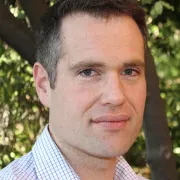
Industry leaders
Defense and aerospace
Defense and aerospace rely on advanced computing technology and tools for intelligence, surveillance, and reconnaissance. These capabilities are essential to maintaining strategic advantage.
From physical simulations of materials to data mining, logistics, battlefield optimization, and AI - conventional computing can offer advantages or form bottlenecks. Quantum computing promises to revolutionize the defense sector with the power to crack encrypted messages, solve critical materials-science problems, or unlock the key to ultra-high-performance aviation fuels.
Similarly, remote sensing is essential to battlefield awareness, but the performance of today’s sensors limit what we can see underground, underwater, or in outer space. Quantum sensing allows uers to detect the undetectable - from gravitational and magnetic anomalies to the localization of radio frequency emitters.
Gain a competitive advantage with quantum technology
We build educational and developer tools that help defense and aerospace professionals take advantage of the quantum opportunity - from computing to sensing.
Real-world use cases

Improving Army logistics with quantum computing
With Fire Opal, the Australian Army tested and validated a quantum computing solution on real hardware that promises to outperform their existing methods.
12X
improvement in the likelihood of finding an optimal solution with Fire Opal over the default hardware execution
Read the case study
Optimally routing 120 convoys can take more than a month of classical computation. The Australian Army is evaluating the potential of quantum computing to provide improvements; however, it’s been difficult to validate the feasibility of a quantum solution due to hardware noise. With Fire Opal, an algorithmic enhancement software, we are able to achieve results on quantum computers that build confidence in our quantum roadmap.

Marcus Doherty
Marcus Doherty
,
Australian Army

Get started now
Make quantum technology useful
















